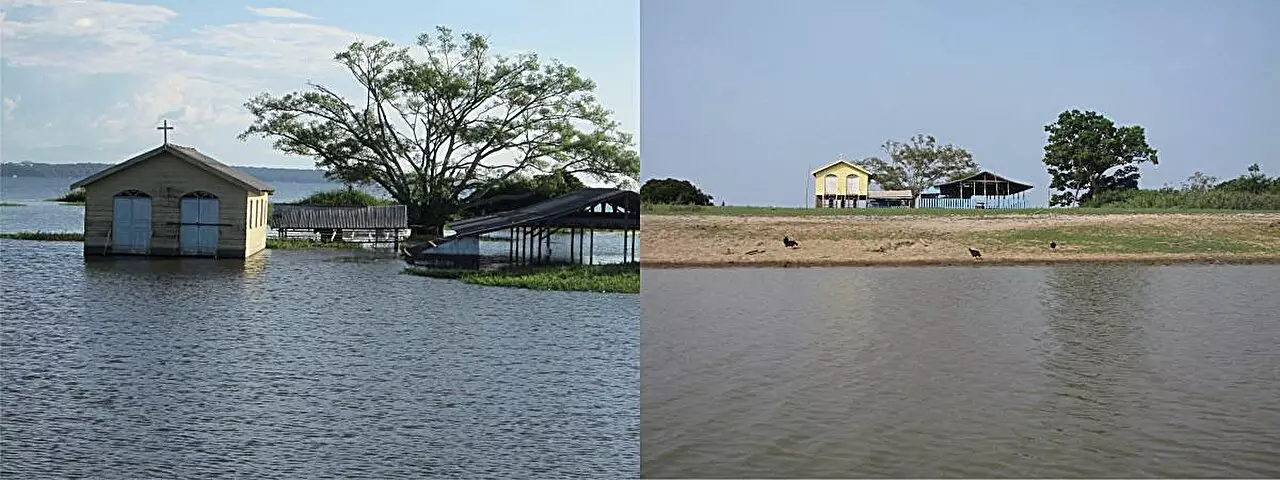The Amazon rainforest, often referred to as the “lungs of the Earth,” plays a critical role in regulating the planet’s climate by absorbing significant amounts of carbon dioxide (CO2) and emitting oxygen. However, the rising threats of climate change—particularly extreme temperature fluctuations and erratic rainfall patterns—pose serious challenges to the delicate ecological balance of this vital region. Recent research conducted by a team from the University of São Paulo (USP) has illuminated the potential ramifications of these changes on methane dynamics within the ecosystem, raising alarms for global climate health.
Methane (CH4), a potent greenhouse gas with a global warming potential many times greater than that of carbon dioxide, is produced and consumed by various microorganisms in the soil. The Amazon basin is a significant contributor to global methane emissions, particularly from its vast floodplains. In fact, it has been estimated that wetlands in this region account for nearly 29% of global wetland methane output. Understanding how climate change influences this gas’s production and consumption in such environments is crucial for predicting the future of global greenhouse gas emissions.
The USP research group, spearheaded by Júlila Brandão Gontijo along with her team of international collaborators, designed an innovative experiment to examine the interactions between microbial communities and methane dynamics in the Amazon. They collected soil samples from two floodplain sites and an upland forest in Santarém and Belterra, Pará state, exposing them to varying temperatures and humidity levels in a controlled setting.
The results demonstrated a notable increase in methane-producing microorganisms within the floodplain soils, suggesting that climate change could facilitate greater methane emissions as organic matter breaks down. In contrast, the upland forest acted as a methane sink but showcased a dramatic reduction—approximately 70%—in its methane consumption under warm and dry conditions. This stark contrast in microbial responses indicates emerging vulnerabilities across different ecosystem components.
The findings of this study herald substantial implications for our understanding of methane cycling in the Amazon rainforest. As Gontijo pointed out, while the floodplain microbiome appears to have the ability to adapt to changing environmental conditions, the upland forest microbiome shows heightened sensitivity. If these patterns persist, the disruption in the natural balance of methane production and consumption could lead to increased greenhouse gas emissions from one of the world’s largest carbon sinks.
The projected scenarios inspired by this research resonate deeply considering the current trajectory of climate change. With methane levels in the atmosphere having risen by 18% over the last four decades, the possible feedback loops arising from altered methane dynamics in the Amazon could exacerbate global warming.
In light of these findings, establishing robust conservation and management policies is more urgent than ever. The detrimental effects of climate-induced shifts in methane dynamics not only threaten the Amazon rainforest itself but also extend their repercussions globally. Sustainable practices are critical in preserving the integrity of this ecosystem and its invaluable services.
Effective policies should prioritize the protection of both floodplain and upland forest areas, ensuring that conservation efforts encompass the diverse ecological interactions that define this complex environment. Policymakers need to integrate scientific findings into tangible actions to mitigate climate change and promote ecosystem resilience, enhancing the ability of the Amazon to continue functioning as a significant carbon sink and mitigating greenhouse gas emissions.
While the current research sheds light on alarming trends regarding methane cycling and climate change, it also opens avenues for future studies. Further field-based experiments and laboratory trials could deepen our understanding of the dynamics governing methane production and consumption. Investigating the role of various methanotrophic microorganisms that consume methane and exploring their potential to counterbalance emissions could yield critical insights.
The urgency to grasp the full scope of methane dynamics in the Amazon cannot be overstated. Ongoing research endeavors will not only contribute to scientific knowledge but will also assist in formulating responsive environmental policies vital for safeguarding the Amazon rainforest against the escalating challenges posed by climate change.
As climate change continues to shape the ecological narrative of our planet, the Amazon rainforest finds itself at a crossroads. The interplay between extreme weather, microbial communities, and methane dynamics could redefine the future of this crucial ecosystem, impacting not only local biodiversity but also contributing to global climate feedback loops. Immediate action through informed conservation strategies and further research initiatives will be paramount in securing the integrity of the Amazon for generations to come.


Leave a Reply